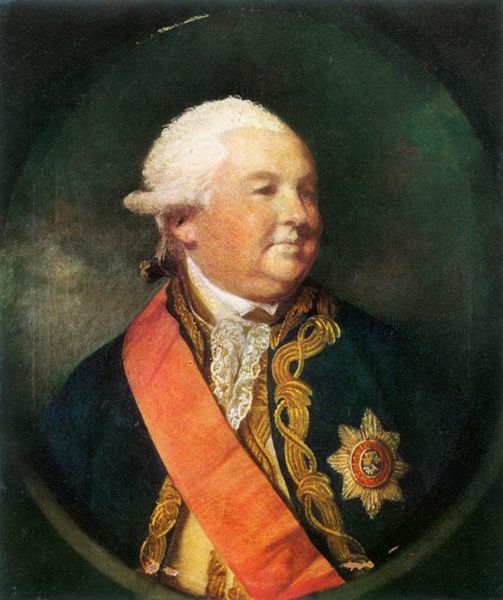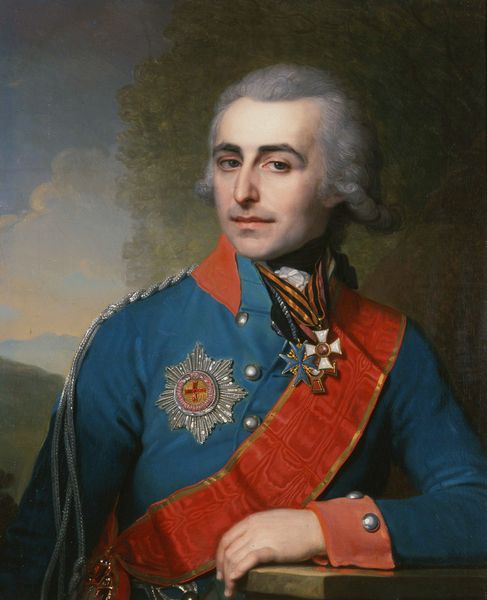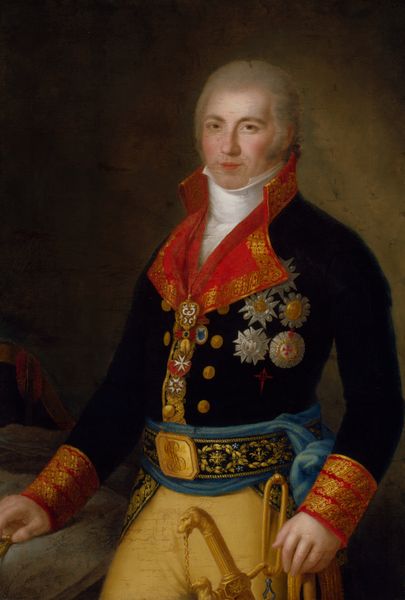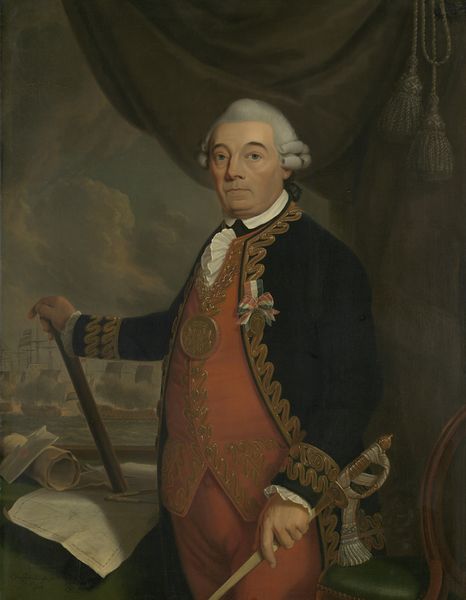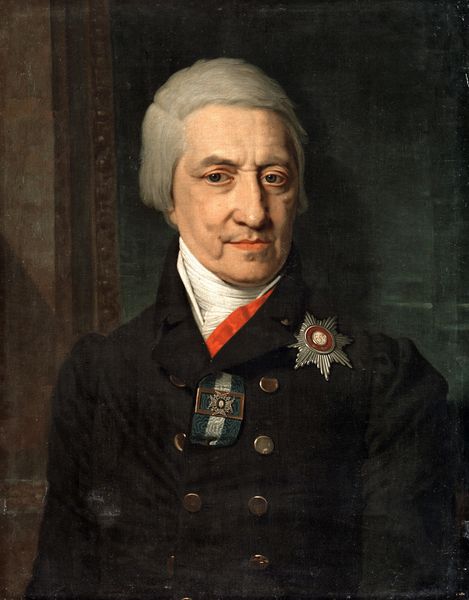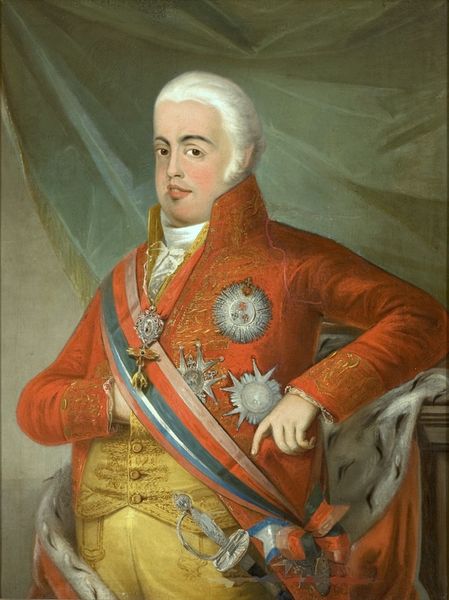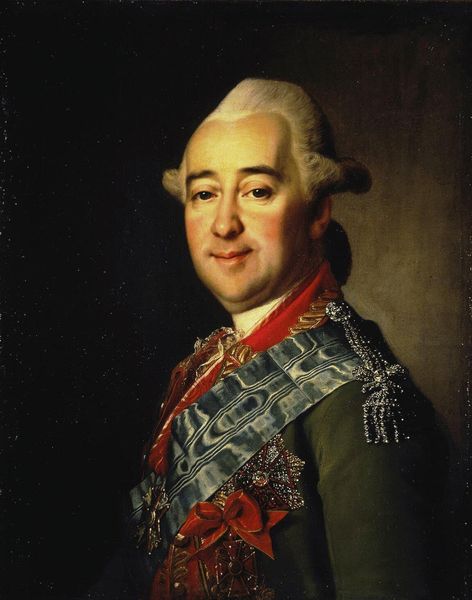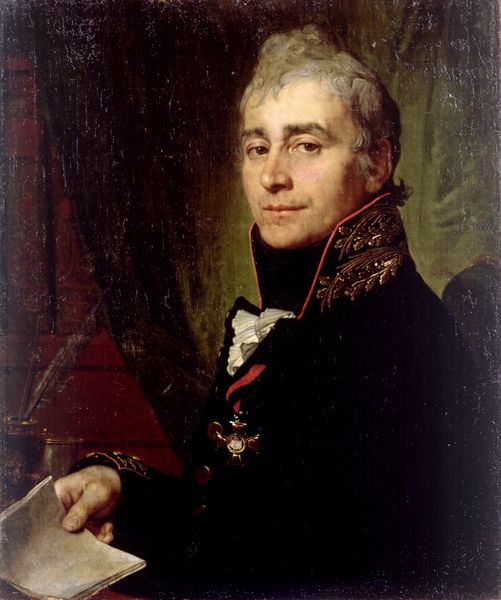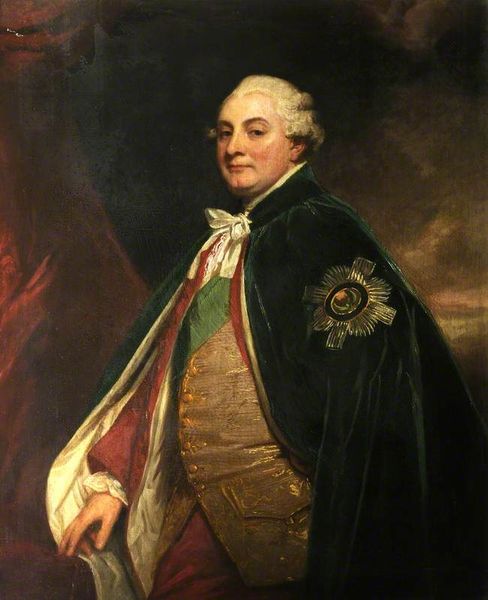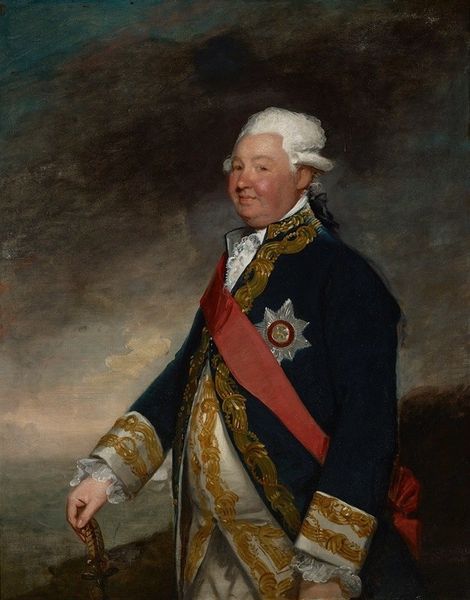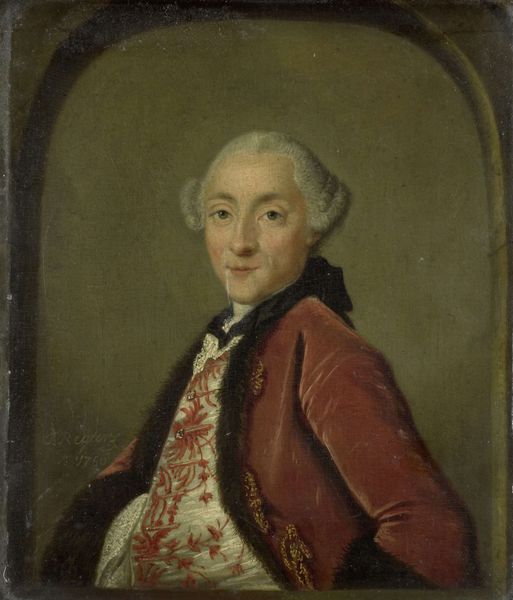
painting, oil-paint
#
portrait
#
baroque
#
painting
#
oil-paint
#
history-painting
#
realism
Copyright: Public domain
Pompeo Batoni’s portrait captures Karl Theodor, Elector of the Palatinate, a prominent figure in 18th-century German politics. The image is a window into the intricate dance between power, representation, and the burgeoning art market of the time. Batoni, a sought-after portraitist, renders Karl Theodor in all his regalia. The lavish fabrics, ornate decorations, and the Elector's composed demeanor all speak to his elevated status. This was the era of Enlightenment and aristocratic rule in the German territories. Karl Theodor's reign was marked by patronage of the arts and sciences, reflecting a broader European trend among rulers seeking to legitimize their authority through cultural achievements. To truly understand this portrait, one must delve into the social history of the Palatinate and the institutional history of art patronage. Examining court records, letters, and other documents can reveal the complex web of power, politics, and artistic production that shaped this image. Art, after all, is never created in a vacuum, but always within a specific social and institutional context.
Comments
No comments
Be the first to comment and join the conversation on the ultimate creative platform.


